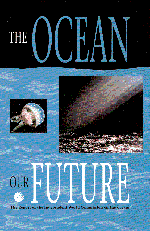Introduction
Published online by Cambridge University Press: 05 August 2012
Summary
The oceans have traditionally provided a source of inspiration and myth, constituting a virtually unbounded domain that, from time immemorial, has nurtured fantasy, superstition and fear as well as curiosity, hopes and aspirations. The vastness of the oceans has filled human imagination with notions of eternity and responded to the deep desire for adventure. The same vastness has suggested an abundance of resources that exceeds human capacity for use and abuse. Unlike the land, where periods of scarcity have not been uncommon, the oceans have promised wealth and rewards that seem inexhaustible.
Our growing understanding of the oceans, made possible by rapid advances in science and technology, has fundamentally changed our perception of the oceans based on such innocence. It has changed with a speed that has few historical precedents and which challenges our capacity to devise appropriate strategies of adaptation.
In order to understand the profound change that has taken place in the way in which the oceans are perceived, it is necessary to look briefly at the past. For centuries, the use of the oceans and their resources was guided by a permissive regime based on the implicit assumption that it was possible to accommodate virtually all uses. Although there were problems in practice – notably in the form of piracy – that added to the risks imposed by nature, the assumption appeared a valid one.
- Type
- Chapter
- Information
- The Ocean: Our Future , pp. 25 - 32Publisher: Cambridge University PressPrint publication year: 1998

